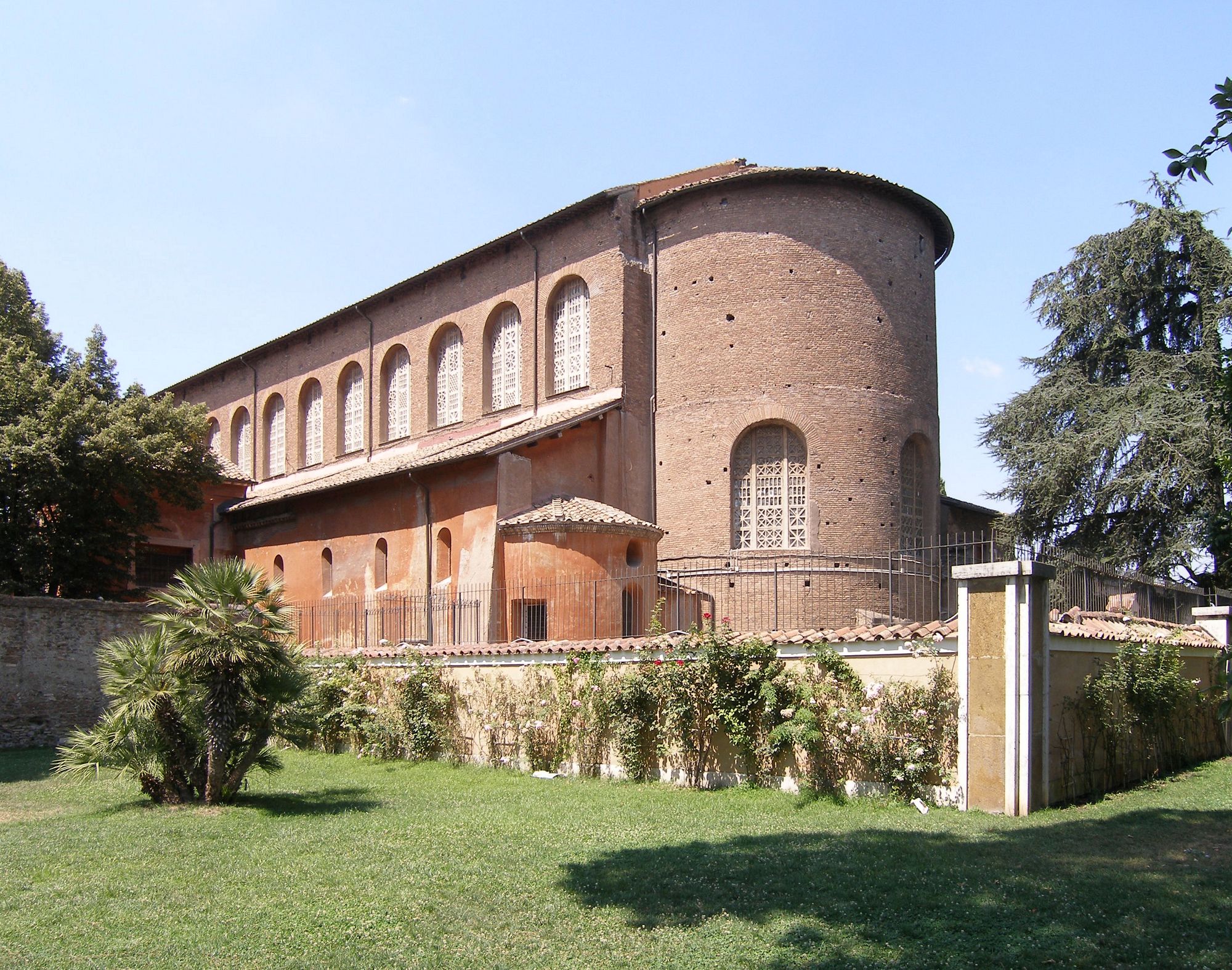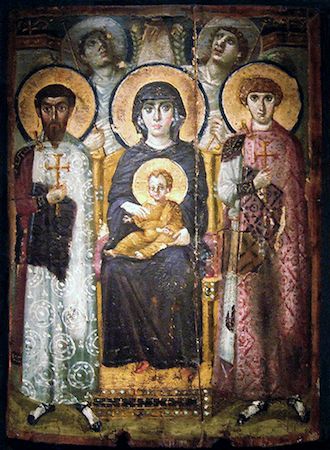3.3 Materials, Processes, and Techniques in Early European and Colonial American Art
7 min read•june 18, 2024
Laurie Accede
Charly Castillo
Laurie Accede
Charly Castillo
AP Art History 🖼
34 resourcesCharacteristics of Artistic Movements
Late Antique
- Late antique architectures was created using a variety of materials, including stone, brick, and wood.
- Mosaics were a popular medium, and was made by using small pieces of colored glass or stone.
- Painted frescoes were also widely used on wall and ceilings, which were created by applying pigments to wet plaster.
- Basilicas have an apse (semicircular projection near the end of the church), transept (aisle in front of the apse), nave (main isle), narthex (area near the entrance), and atrium (open space in a building).
- Use of spolia (reused architectural elements) from older works
- Churches either centrally-planned (circular with altar in the center) or axially-planned (long nave like an axis) ⛪
- Buildings have little exterior decoration because it was associated with paganism.
- Coffered (sunken panel) ceilings are popular.

Santa Sabina. Image Courtesy of Wikipedia
Byzantine
- Similar to antique art, Byzantine materials and forms included mosaics.
- Use of pendentives (curved triangular pieces of masonry) or squinches (curved polygonal pieces of masonry) to attach a dome to flat walls
- Mosaics (decorations made with tessarae like stones and colored glass) on the walls
- Architects creates lots of windows to allow light to come in ☀️
- Circular plan or a combination of a central and axial plan
- Martyrium (shrine built over the tomb of a martyr that stores their relics) in a church

Virgin (Theotokos) and Child Between Saints Theodore and George Image Courtesy of Khan Academy.
Islamic
- Islamic art was created using a variety of materials including various pigments, metalwork, textiles (to create elaborate carpets), ceramics, and stone masonry.
- Kufic (an extremely decorative and elaborate type of script) calligraphy is written on walls of religious buildings.
- The use of open, airy interiors which emphasizes the feeling of weightlessness in the overall buildings
- Use of voussoirs (wedge-shaped stones) to create arches
- Calligraphy (ornamental handwriting) used as a decoration on walls, just like in Islamic architecture
- Use of horror vacui (literally the "fear of empty space," filling blank spaces on a work with designs)
- Arabesques, which are elaborate geometric patterns

Pyxis of al-Mughira. Image Courtesy of Wikipedia.
Medieval Art
- During the medieval period, the primary materials used in art were pigments made from natural sources that were applied to surfaces such as vellum, which is similar to parchment.
- Use of two scripts: half-uncial (a type of script used for writing in Latin) and Anglo-Saxon minuscule (a medieval writing system native to Ireland and Anglo-Saxon England)
- Mix of Celtic and Christian motifs
- Sculptures included different metalworking techniques, including cloisonné (putting metal around colored areas) and chasing (hammering designs into metal 🔨)
- The sculptures also included zoomorphic (animal) motifs
- Medieval artists were also known for illuminated manuscripts which combine text and images, and were decorated with intricate designs, gold leaf, and pigments.
Romanesque
- Romanesque architecture primarily used different types of stone like marble and limestone.
- Textiles were also used. (see the Bayeux Tapestry)
- Architectures used rib vaults (diagonal vaults that cross onto one another and create a rib-like appearance) to support the buildings' roofs
- Paintings used vibrant colors and was then outlined in black. Human heads and hands are exaggerated and much larger than any other features of the body.
- Figures across art are sized by importance
- Other aspects of Romanesque art included: portals (doorways) made up of archivolts (decorative curved band under an arch, a keystone (stone found directly on top of the door at the center), a tympanum (decorated section above the door), a lintel (horizontal stone), a trumeau (vertical bar used as support), and two jambs (side posts)
Gothic
- Materials in Gothic art included stone, glass, woodwork and numerous illuminated manuscripts made with vellum and decorated with pigments and gold.
- There was the use of flying buttresses (arches that connect a wall to another structure) to support the building's roof and evenly distribute weight 🏋️
- Choirs (a large area in between the apse and the transept) were now included in church plans
- Pinnacles are now decorated, unlike in previous artistic movements
- Carvings become more elevated and begin to move further away from the wall they are carved into.
- The theme of salvation (Christian belief of being saved from sin because of one's faith in Jesus Christ) becomes more prevalent in sculptures

Chartres Cathedral. Image Courtesy of Wikipedia (CC BY-SA 3.0).
The Renaissance
- During the Renaissance, new materials, such as oil paint and tempera, which allowed for a greater range of colors and more realistic representation.
- Architecture continued to use stone masonry
- Fresco was also used.
- Techniques in the Northern Renaissance include:
- Printmaking methods like woodcut (using a carved wooden tablet as a stamp to apply ink onto paper), etching (exposing a carved metal plate to acid before putting ink on it and stamping onto paper), and engraving (carving a design into a metal plate, putting ink in the crevices, and pressing it onto paper) become popular 📜
- More religious themes and symbolism, as well as genre paintings (works picturing domestic scenes and other everyday activities) become popular artistic forms.
- Techniques during the Early Renaissance include:
- The growing importance of proportions and the use of light
- Paintings included the use of linear perspective (making a painting or drawing look dimensional on a 2D surface through 3 elements: a vanishing point, horizon line, and orthogonals)
- Techniques during the High Renaissance include:
- Growing popularity of the canvas (a woven cloth used for painting) as a medium 🖼️
- The use of sfumato (blending colors to create a softer, smoother transition) and chiaroscuro (smoothing the transition between light and dark colors) are widely seen in paintings of the time
- Arcadian (rustic, rural, and simplistic) appearance to some works
Image Courtesy of Le Gallerie Degli Uffizi. The Birth of Venus.
Mannerism
- Elongated, distorted bodies that are not proportional or anatomically accurate
- Use of bright, pigmented colors
- No ground line, which makes seem as if they are ethereal and floating in space 🧚

Image Courtesy of Emma Alana on Pinterest. The Entombment of Christ.
Baroque
- The Baroque period considered of similar mediums to the previous artistic movements. However, most sculptures were made from marble.
- Architecture placed an importance of movement: façades (front of building) have rippling, wavelike forms, shadowing changes as the sun moves
- Still life paintings with a vanitas theme (emphasizes the shortness of life and people's eventual death) become popular 💀
- Tenebrism (dramatic contrasts because dark and light colors) adds drama to artists' paintings
- Oil painters use impasto (heavy application of paint) to make their images stand out
- Usually made of marble
- Sculptures were depicted in motion, as you can see in the sculpture below ⬇️

The Ecstasy of Saint Teresa. Image Courtesy of Wikipedia (CC BY-SA 4.0).
New Spain
- Many Baroque materials and techniques were brought to New Spain
- New Spain was a combination of Spanish and Native American artistic traditions like using oil paint as a media, Catholic motifs, and painting on flat surfaces (syncretism)
Spaniard and Indian Produce a Mestizo. Image Courtesy of AP Art History.

© 2024 Fiveable Inc. All rights reserved.